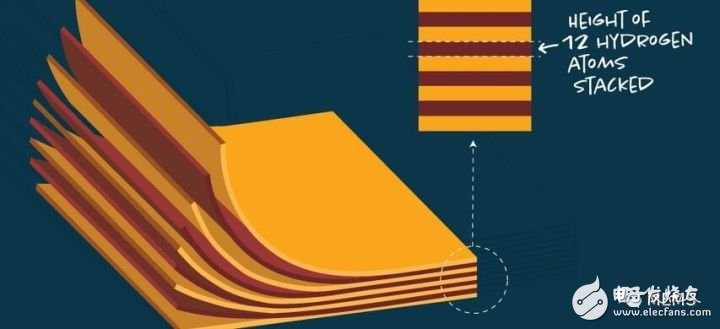If you think that the handheld electronic device is small enough to be further reduced, a breakthrough in semiconductor architecture may be the key to further miniaturization of the technology. Researchers at the University of Chicago and Cornell University have collaborated to create a silicon film that grows to a few atoms thick and allows them to be stacked on top of each other. Like a stack of Post-IT. With this way of stacking micro-semiconductors, scientists and engineers can further reduce the size of personal electronic devices such as mobile phones to various electronic products such as solar cells. Up to now, these silicon thin film layers have grown on top of each other, limiting the materials available for fabrication. This means that the process of "growing" these thin layers must be able to withstand extremely high temperatures. The researchers used the method of making the film separately, then placing the material in a vacuum for stripping, and finally stacking and joining the layers as a "sticker"; this new method does not require heating because each layer is Separately constructed and placed on top of each other. This allows researchers to create weak bond bonds between layers to replace traditional strong covalent bond connections, thereby reducing interference between layers and leaving their surface integrity intact. This new approach allows scientists to create micro-films of only a few atoms thick and stack them on new electronic components like “sticky stickersâ€, which is expected to create unlimited application possibilities. .. (Source: UChicago Creative) The researchers placed the film in the device to test its electrical properties, and the results showed that its function could be designed at the atomic level, making it a fundamental component of future computer chips. This innovative approach brings countless possibilities for the application of semiconductor thin film materials. It can not only grow thin film materials on water or plastic surfaces, but also immerse the thin film materials in water for separation or ion beam cutting or etching. Researchers are currently exploring a complete, simple and cost-effective approach. If a silicon film layer with only a thick atomic thickness can be produced, it is possible to further reduce almost all electronic products. Imagine interleaving individual conductor layers and switching to 3D electronic components or the entire system. Microelectromechanical systems (MEMS) can also be included in these layers to provide all of the sensors and actuators on a single device. No need to drive the signal, the chip power is reduced, and the performance can continue to improve. However, this method also has a series of problems. Because these thin layers are only a few atoms thick, it is difficult to place them precisely on top of each other. JiWoong Park, a professor of chemistry at the University of Chicago, said: "The problem we are considering is as difficult as covering a Chicago-like plastic film without creating any bubbles." When the thickness of the material reaches the atomic level, An independent small atom can cause problems. However, this innovative process can bring countless breakthroughs to many technologies and industries, even beyond your imagination. “We expect new models to accelerate the discovery of new materials and enable large-scale manufacturing,†Park said. CBD Disposable E-Cigarette,CBD Mini E Cigarette,CBD Electronic Cigarette Customizing,Rechargeable E Cigarette Shenzhen E-wisdom Network Technology Co., Ltd. , https://www.healthy-cigarettes.com
